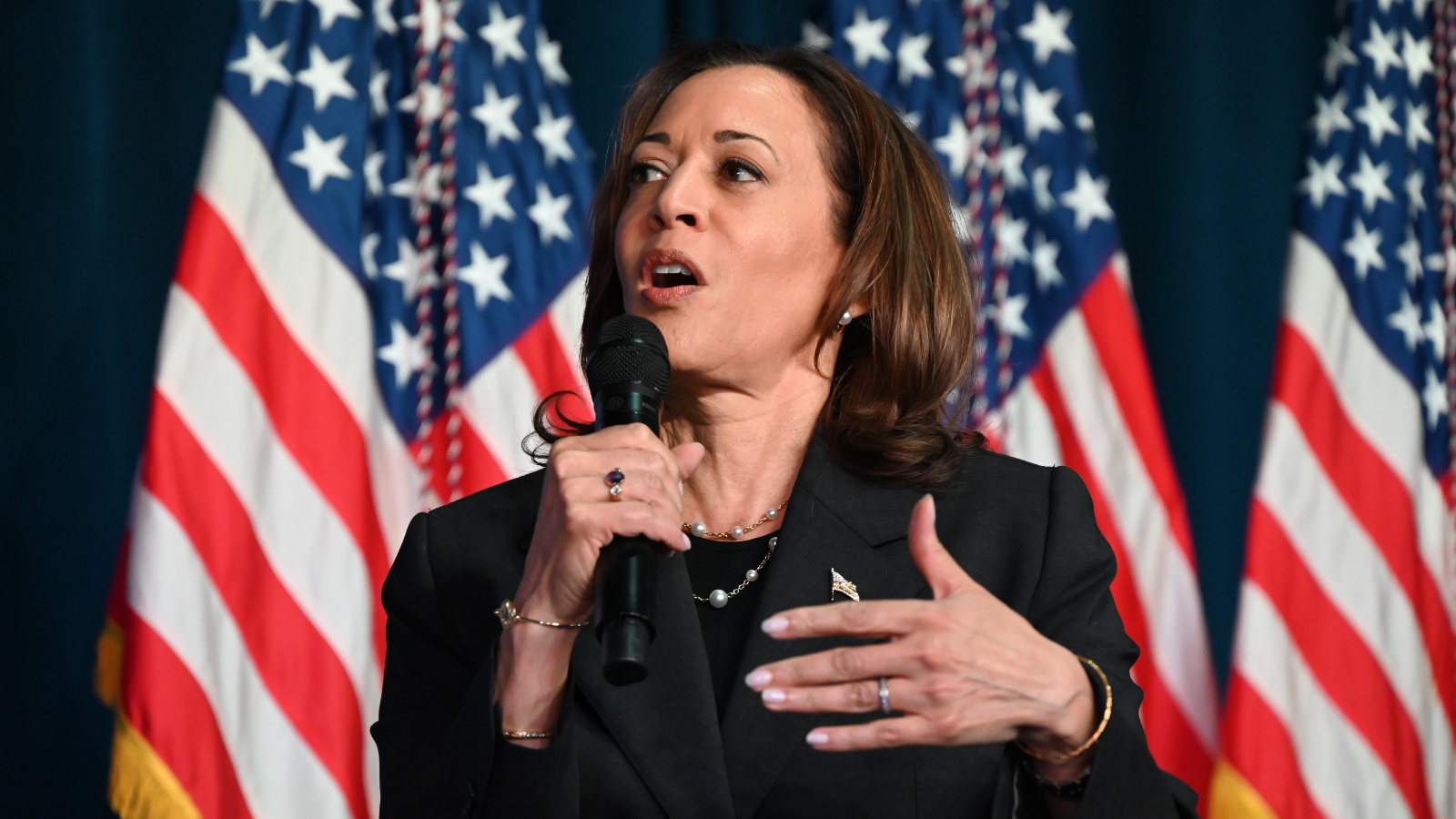CLIMATEWIRE | The U.S. is waging a global charm offensive to obtain the minerals it needs to replace fossil fuels with cleaner energy. Its latest target is a resource-rich country wedged between China and Russia, two U.S. adversaries.
Mongolia — once nicknamed “Minegolia” because of its abundant reserves of copper, gold, coal and rare earths — was visited last month by senior American officials who are trying to unlock new sources of minerals to ease the United States’ dependence on China, the global hub for clean energy technologies.
The trip sheds light on U.S. efforts to forge pacts with countries whose deserts, hillsides and valleys contain minerals that American manufacturers will need to build machinery for industrial solar and wind farms, and millions of electric vehicles.
China dominates the global flow of raw or processed minerals, and American officials say the U.S. strategy is meant to diversify supply chains that feed materials and components to the growing number of domestic companies that are manufacturing low-carbon products.
That effort gained urgency after U.S. relations with Beijing abruptly deteriorated a year ago, raising concerns that China could restrict access to minerals as the U.S. races to exponentially increase production of renewable energy and electric vehicles.
At the center of the Biden administration’s strategy is a sales pitch: The U.S. will give countries a better deal for their resources, officials say.
“Mongolia is facing a generational opportunity. And that generational opportunity is a need for us to find critical minerals and rare earths in order to achieve our clean energy goals,” Jose Fernandez, undersecretary of State for economic growth, energy and the environment, said in an interview with E&E News. “What we offer is a way for them to do so responsibly, in a way that observes and adheres to ESG principles and that benefits the community.”
That’s appealing to resource-rich, but financially poor, countries that want to reap the benefits of the current mineral rush to grow their economies. It’s particularly important to Mongolia, which is experiencing major impacts from climate change and faces local opposition to mining projects.
But the U.S. is in an uphill battle.
It has to convince countries that American companies won’t squeeze their lands and people for resources, and then leave them with an environmental mess. And it wants to encourage them to support regulations that attract private investment, officials say. Tensions around logistics and geopolitics are also at play. In Mongolia, there are no overland routes out of the country that don’t touch China or Russia.
Yet, if the U.S. fails to find new mineral sources, its climate goals are at risk.
Turning over every stone
The International Energy Agency estimates that demand for critical minerals will surge over the next two decades if renewables are ramped up fast enough to meet the goals of the Paris climate agreement.
For lithium, demand is expected to grow fourtyfold, followed by graphite and cobalt — all of which are needed to make electric cars. Demand for copper, which Mongolia has in abundance and is used in solar and wind technologies, could rise by more than 40 percent.
“Within a decade, shortages of critical minerals such as lithium, graphite and copper will increase prices and slow the deployment of clean energy technologies,” Fernandez said at an event hosted recently by the Center for Strategic and International Studies.
That coming crunch has put the Biden administration into overdrive. American officials have contacted mineral producing allies as well as frontier nations like Mongolia to secure raw materials.
Fernandez said Mongolia is an example of what the U.S. hopes to achieve through the Minerals Security Partnership, an initiative with 14 mostly Western countries to bolster sustainable investment in the mining, processing and recycling of critical minerals. It includes Australia, Canada, Japan, South Korea, India and several European nations.
It puts an emphasis on the private sector and works to ease the risk for businesses through diplomatic support and government-backed financing mechanisms like the U.S. Export-Import Bank. Earlier this year, the partnership announced a set of principles for participating companies and governments that emphasize transparency, ethical business operations, environmental protection and support to local economies.
Mongolia is just one potential source of raw materials. In the past year, Fernandez has also traveled to South Africa, the Democratic Republic of Congo and Mexico. And in May he held virtual talks with officials in Argentina to discuss critical minerals projects.
Where Mongolia fits on the priority list isn’t clear. It produces 1.4 percent of the world’s copper and 1 percent of its molybdenum, a mineral in steel alloys used for solar panels and wind technology, according to the Extractive Industries Transparency Initiative (EITI), a global standard for good governance of oil, gas and minerals.
But much of its mineral wealth remains untapped.
In a troubled neighborhood
Mongolia is one of the most sparsely populated countries on the planet. Under the feet of its nomadic herders, a potential wealth of minerals has yet to be fully discovered.
But large-scale mining projects have faced barriers from concerns about environmental degradation on the Mongolian steppes, where its people are culturally entwined with the landscape.
Climate change is already leading to more frequent drought and dust storms in Mongolia, and its capital, Ulaanbaatar, suffers from some of the world’s worst air pollution due to the extensive use of coal.
Almost totally encompassed by Russia to the north and China to the south, Mongolia has sought to lessen the grip of its neighbors by engaging with countries such as the U.S., France and Australia. France reportedly struck a deal to source minerals, including uranium, from Mongolia during a visit in May by French President Emmanuel Macron.
“Mongolia is very keen to maintain economic relationships with countries other than Russia and China in order to keep their hand and their political and economic interests balanced,” said Piper Campbell, who served as U.S. ambassador to Mongolia in the Obama administration.
It’s a delicate balancing act.
Roughly a quarter of Mongolia’s economy depends on mining and nearly 90 percent of its export revenue comes from minerals — most of which go to China, either for processing or to pass through its ports
“If the Chinese say ‘We’ll stop buying coal and copper from you,’ Mongolia’s economy stops,” said Amar Adiya, a former Mongolian diplomat who runs Mongolia Weekly, a newsletter for investors.
In the future, some of the minerals could be loaded onto planes and flown out, experts say. But many of those materials would first need to be processed into less bulky products. That would require new investments to build processing facilities — a notoriously polluting business that could spark local resistance.
Some of the minerals could potentially go to South Korea, where they could be processed and exported to the U.S. and its allies. Fernandez’s visit to Mongolia included a first-ever trilateral meeting with Korea about collaborating on critical mineral supply chains.
For now, American outreach to Mongolia seems to be as focused on maintaining an ally in a region of the world that’s difficult to navigate for Western nations as a full-fledged effort to create the conditions to procure minerals, according to experts.
“Mongolia is clearly geostrategically important given its location between Russia and China, and as a bulwark of democracy and in a somewhat troubled region of the world,” said Campbell, the former ambassador.
The U.S. is already providing Mongolia with technical assistance to map resources and improve the transparency of the tendering process, Fernandez said. The next step could be to help implement a project.
The Mineral Security Partnership is currently vetting 15 projects on several continents that it could eventually support through a combination of finance, political backing or technical support.
That’s down from close to 200 projects just nine months ago, Fernandez said.
He wouldn’t reveal where they are, saying companies want that information kept confidential to protect potential investments. He hopes to be able to announce a project by the end of the year and then “start moving the needle.”
Reprinted from E&E News with permission from POLITICO, LLC. Copyright 2023. E&E News provides essential news for energy and environment professionals.
ABOUT THE AUTHOR(S)
Sara Schonhardt covers climate and energy developments globally, with a focus on international climate negotiations, finance and how countries are approaching the transition to cleaner economies. Prior to joining E&E News, Sara worked as a reporter for more than a decade across much of Southeast Asia, with stints for The New York Times, Christian Science Monitor and Voice of America. She was a staff reporter for The Wall Street Journal in Indonesia until 2017. Sara has a degree in journalism from Ohio University and a master’s degree in international affairs from Columbia University.
Note: This article have been indexed to our site. We do not claim legitimacy, ownership or copyright of any of the content above. To see the article at original source Click Here












